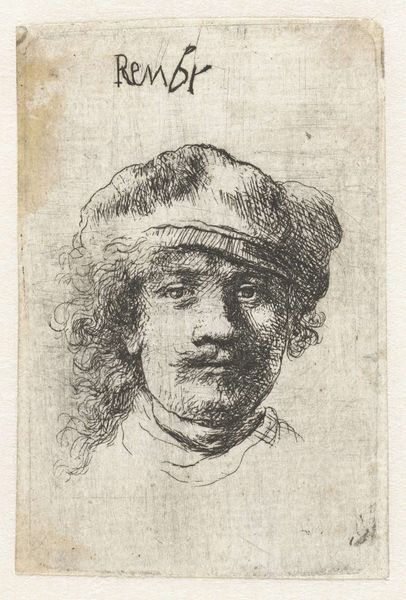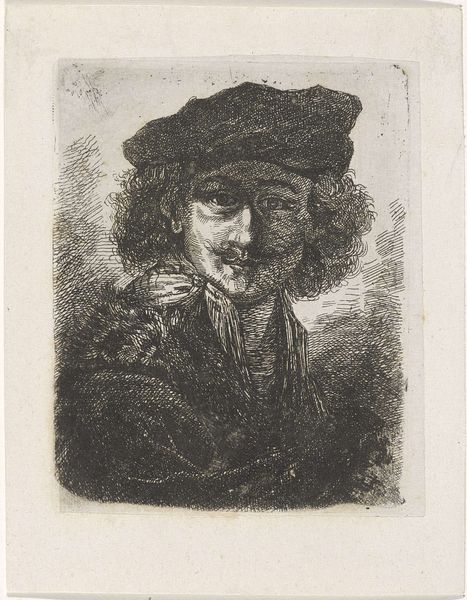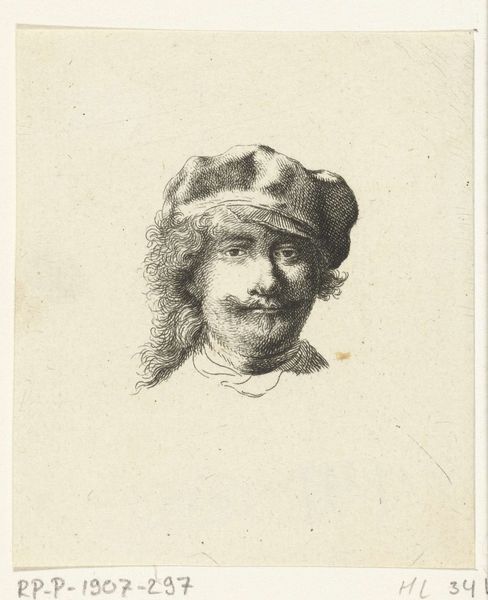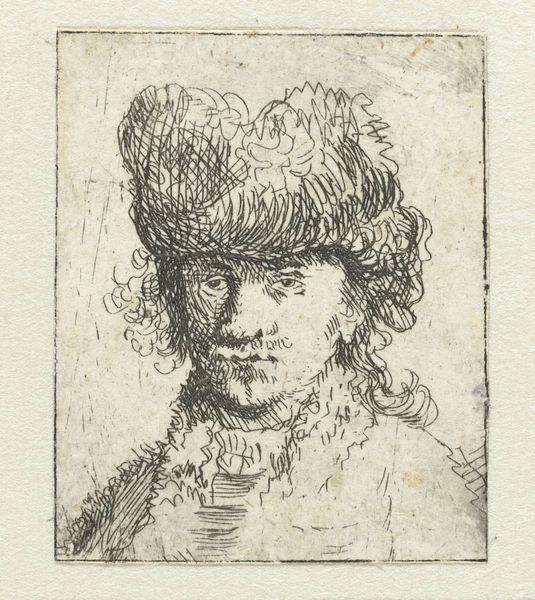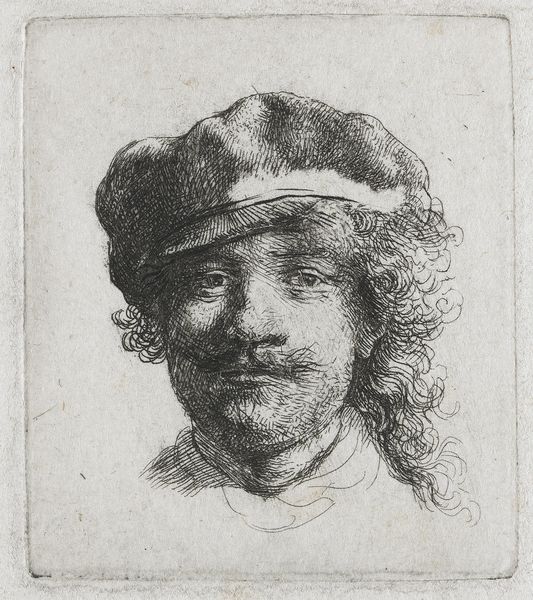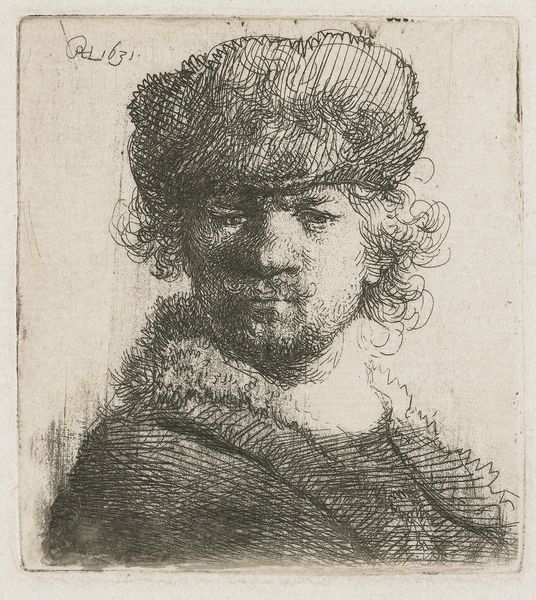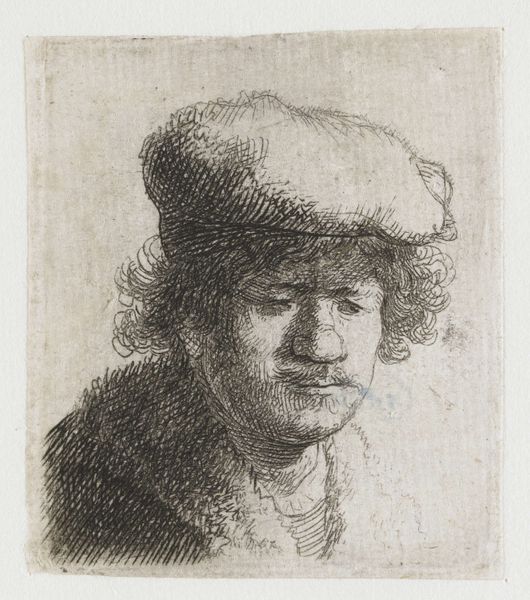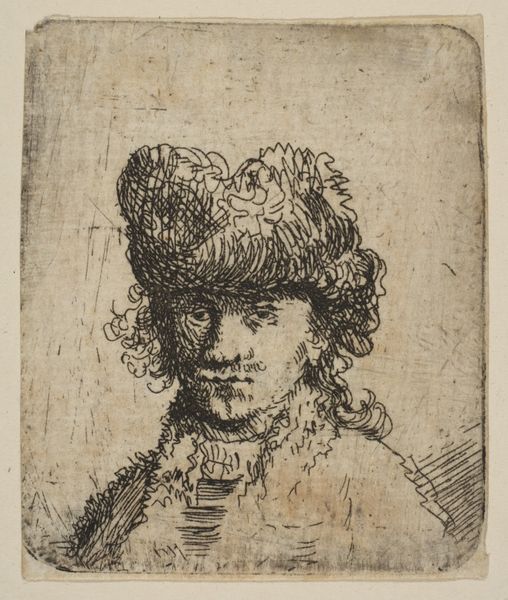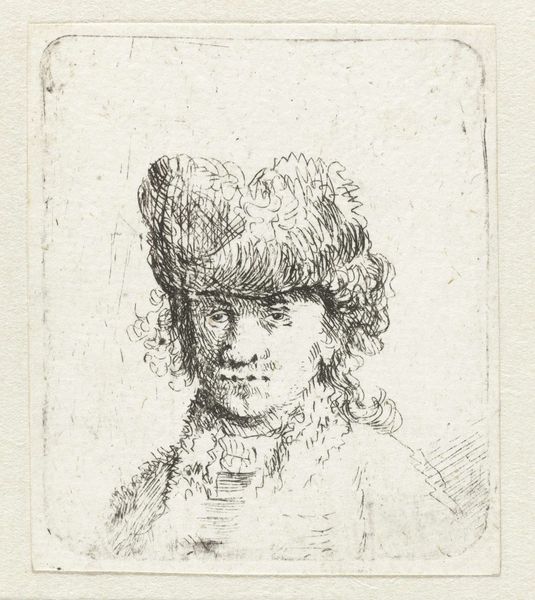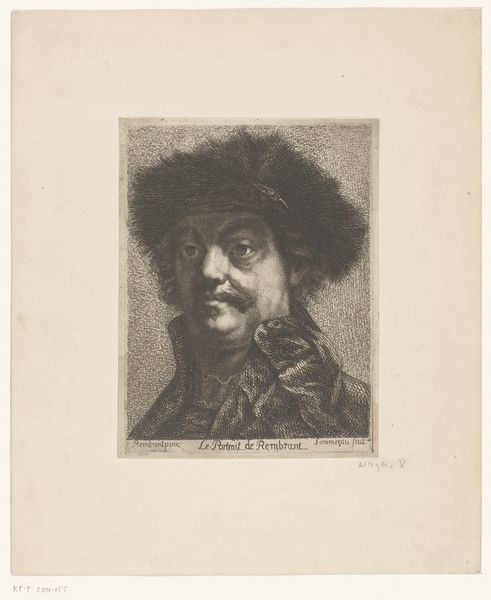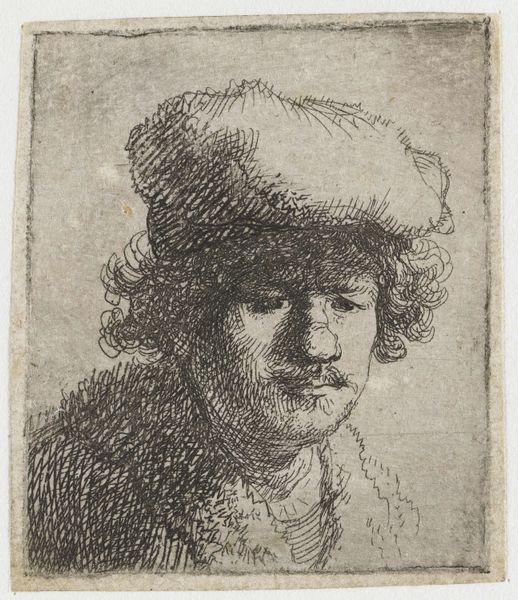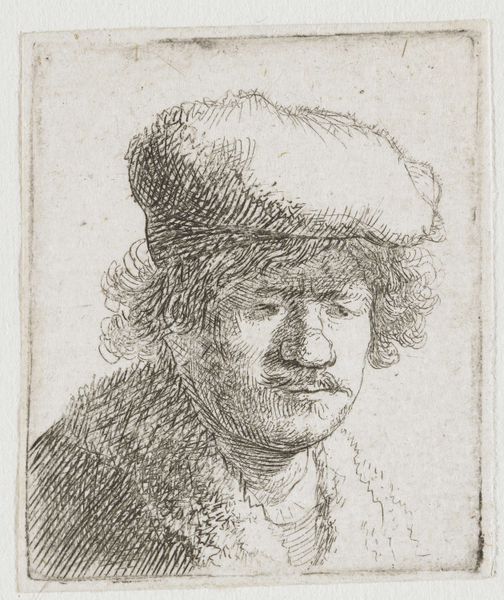
print, etching
#
portrait
#
16_19th-century
#
self-portrait
# print
#
etching
Dimensions: height 50 mm, width 43 mm
Copyright: Rijks Museum: Open Domain
This self-portrait was made by Ernst Willem Jan Bagelaar, most likely in the late 1700s or early 1800s, using a printmaking technique called etching. The image is made up of finely incised lines, created by drawing into a waxy ground on a metal plate. The plate is then submerged in acid, which bites away the exposed lines, and finally, the plate is inked and printed. The material qualities of the metal plate and the corrosive action of the acid bath directly influence the line quality, giving this image its distinctive character. The nature of these etched lines, in turn, influences the appearance, texture, and form of the depicted subject. It is worth considering that printmaking in this era was becoming increasingly industrialized, which would have affected the role of an artist like Bagelaar. The relatively low cost of making etchings, as compared to paintings, would have broadened its accessibility, yet also raised questions about the status of the medium. Ultimately, it is this interplay of materials, process, and social context that makes this self-portrait so compelling, challenging us to reconsider traditional distinctions between craft and fine art.
Comments
No comments
Be the first to comment and join the conversation on the ultimate creative platform.
